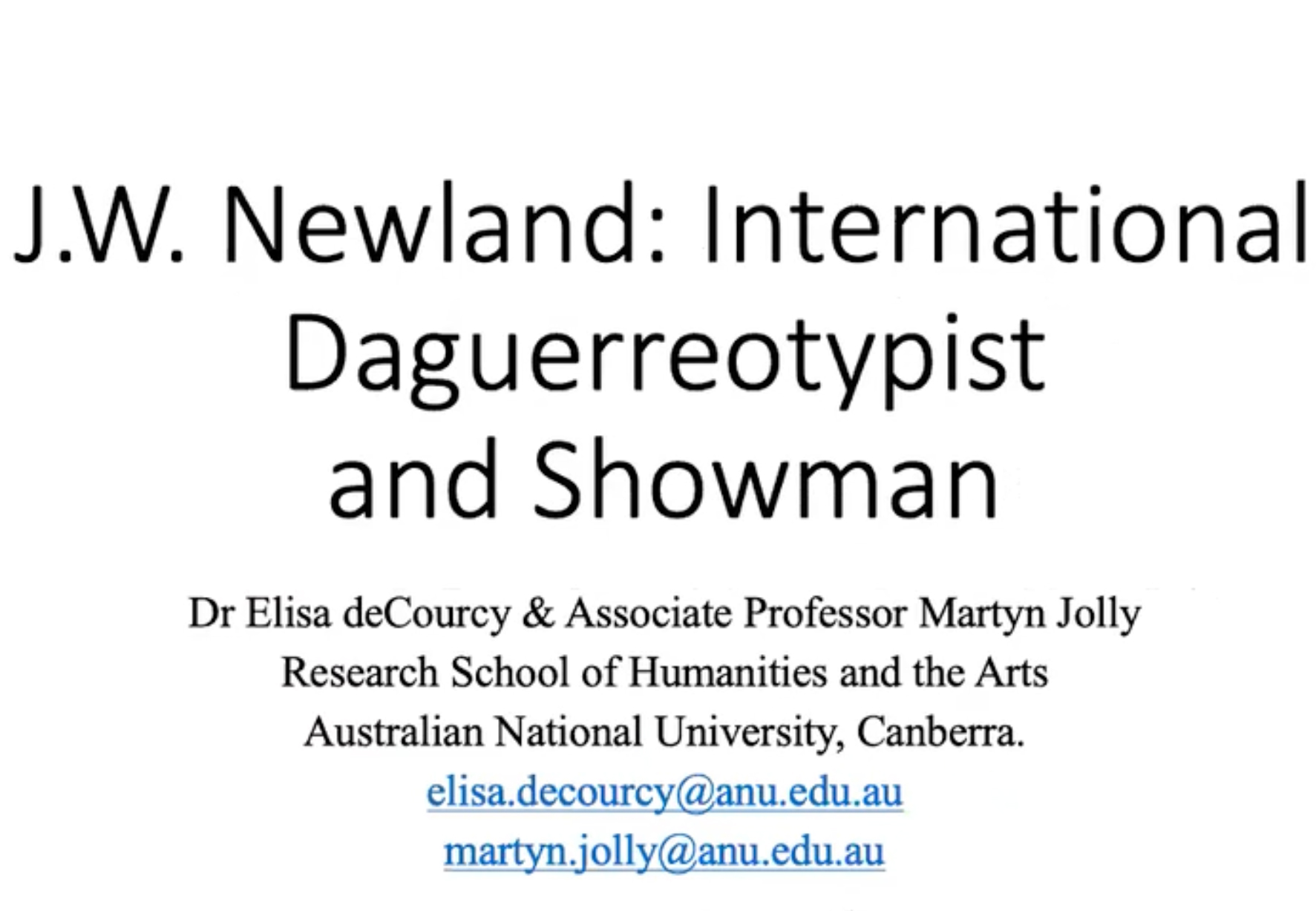- Home
- J. W. Newland: International Daguerreotypist and Showman by Dr. Elisa deCourcy and Dr. Martyn Jolly (video)
J. W. Newland: International Daguerreotypist and Showman by Dr. Elisa deCourcy and Dr. Martyn Jolly (video)
Description
James William Newland made and exhibited daguerretoypes in various countries, from the United States, through Central and South America, across the Pacific to New Zealand and the Australian colonies, and finally to India. Yet so far, he has appeared as little more than a footnote in various national histories of photography.
In this talk based on their book Empire, Early Photography and Spectacle, Dr. Elisa deCourcy and Dr. Martyn Jolly stitch together the breadth of Newland’s transnational career, emphasizing his connections with well-known photographers and subjects. Newland emerges as someone at the cutting-edge of early photography.
Their talk features a selection of Newland’s daguerreotypes from the United States, Australia, and India. It discusses how the unique business model of his studio and gallery warrants more attention in histories of early photography.
deCourcy works at the Australian National University (ANU) as an art historian specializing in early photography. She currently holds an Australian Research Council (ARC) Early Career fellowship for a project titled “Capturing Early Australian Photography in a Globalising World” (2020-23). In 2018, she was a fellow at the Harry Ransom Center at the University of Texas at Austin. She has spoken and published about her research in Australia and abroad. Her work has been covered by The Guardian, The Smithsonian Magazine, and The Conversation.
Jolly is an Honorary Associate Professor at the Australian National University School of Art and Design, where he was formerly Head of Photography and Media Arts. He has published widely on spirit photography, Australian photography and the magic lantern. He has received research grants for the projects Heritage in the Limelight: The Magic Lantern in Australia and the World and Curating Photography in the Age of Photo Sharing. His photography is in the collections of the National Gallery of Australia, the National Gallery of Victoria, and the Canberra Museum and Gallery.
Presented on June 30, 2021.


